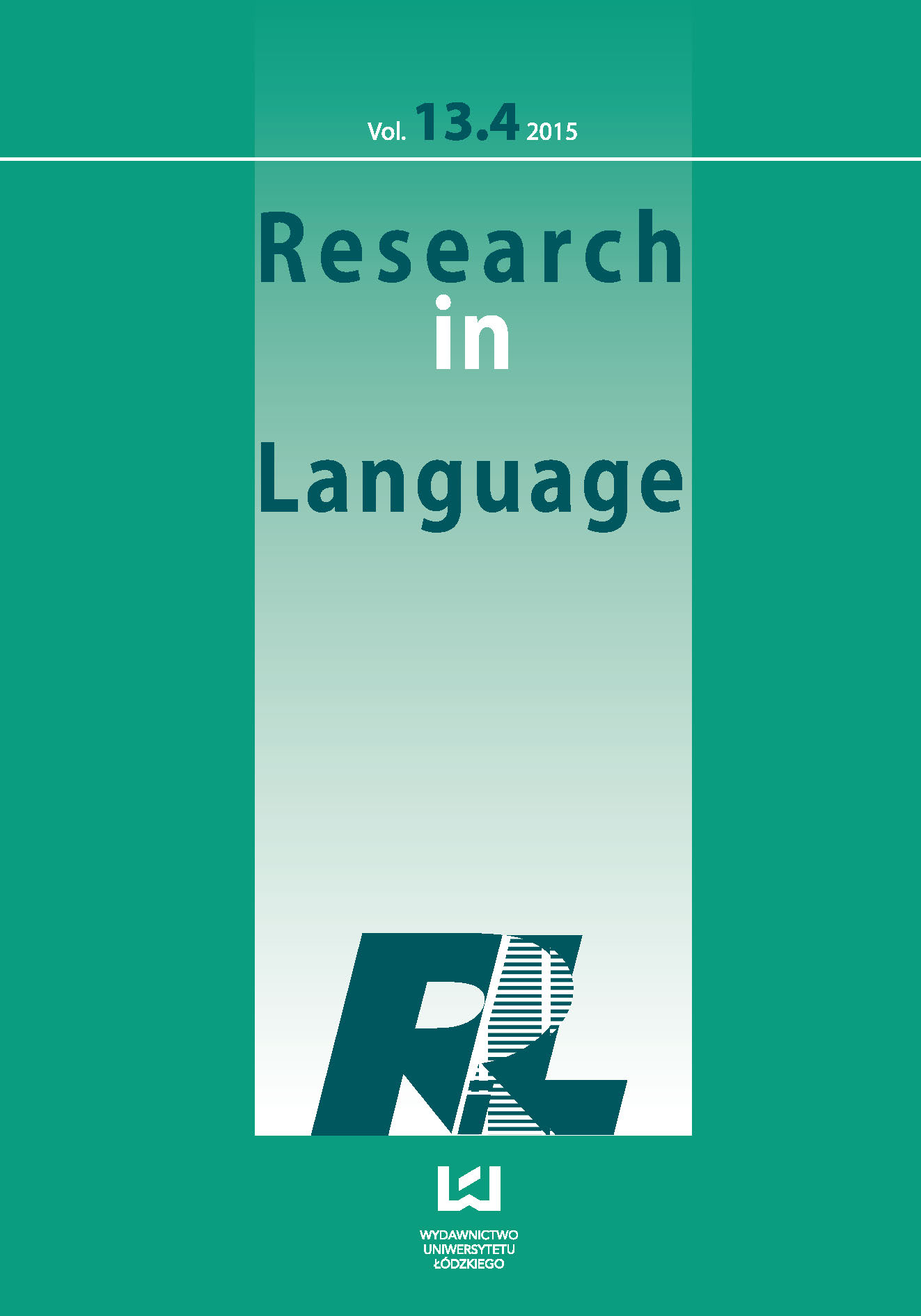Incomplete descriptions and the underdetermination problem
DOI:
https://doi.org/10.1515/rela-2015-0034Keywords:
incomplete definite descriptions, quantifier domain restriction, referential uses, underdeterminationAbstract
The purpose of this paper is to discuss two phenomena related to the semantics of definite descriptions: that of incomplete uses of descriptions, and that of the underdetermination of referential uses of descriptions. The Russellian theorist has a way of accounting for incomplete uses of descriptions by appealing to an account of quantifier domain restriction, such as the one proposed in Stanley and Szabó (2000a). But, I argue, the Russellian is not the only one in a position to appeal to such an account of incomplete uses of descriptions. Proponents of other theories, such as the Fregean, which does not treat descriptions as quantifiers, might benefit from this account of domain restriction. In the second part of the paper I discuss referential uses of incomplete definite descriptions. Relative to such uses, Wettstein (1981) and others have argued that the Russellian theory faces a problem of underdetermination of semantic content. Neale (2004) has replied to this objection showing why it does not pose a threat to the Russellian theory. Again, I argue that not only the Russellian, but also the Fregean can subscribe to Neale’s (2004) suggestion.
References
Bach, K. (1994). Conversational Impliciture. Mind and Language, 9(2), 124-162.
Google Scholar
Bach, K. (2000). Quantification, qualification and context: a reply to Stanley and Szabó. Mind and Language, 15(2&3), 262-283.
Google Scholar
Bach, K. (2004). Descriptions: Points of Reference. in M. Reimer & A. Bezuidenhout (Eds.), Descriptions and Beyond (189-229). Oxford: Oxford University Press.
Google Scholar
Buchanan, R., & Ostertag, G. (2005). Has the problem of incompleteness rested on a mistake? Mind, 114(456), 889-913.
Google Scholar
Carston, R. (2002). Linguistic Meaning, Communicated Meaning and Cognitive Pragmatics’. Mind and Language 17, 127-48.
Google Scholar
Collins, J. 2007. Syntax, More or Less. Mind, 116(464), 805-850.
Google Scholar
Corazza, E. (2006). Referring and Describing: Rehearsing the Referential/Attributive Distinction. Research in Language, 4, 31-55.
Google Scholar
Devitt, M. (2007). Referential Descriptions and Conversational Implicatures. European Journal of Analytic Philosophy, 3(2), 7-32.
Google Scholar
Elbourne, P. (2008). The argument from binding. Philosophical Perspectives, 22(1), 89-110.
Google Scholar
Elbourne, P. (2013). Definite Descriptions, Oxford: Oxford University Press.
Google Scholar
Elgardo, R., & Stainton, R. (2004). Shorthand, Syntactic Ellipsis, and the Pragmatic Determinants of What is Said. Mind and Language, 19, 442-71.
Google Scholar
Fintel, K. von (1994). Restrictions on quantifier domains. (Dissertation). University of Massachusetts at Amherts.
Google Scholar
Heim, I., & Kratzer, A. (1998). Semantics in Generative Grammar. Blackwell Textbooks in Linguistics, Oxford: Blackwell.
Google Scholar
Kratzer, A. (2004). Covert Quantifier Domain Restrictions. Talk at the Milan Meeting, Palazzo Feltrinelli, Gargnano.
Google Scholar
Kripke, S. (1977). Speaker's Reference and Semantic Reference. Midwest Studies in Philosophy, 2, 255-276.
Google Scholar
Neale, S. (1990). Descriptions. Cambridge, MA: MIT Press.
Google Scholar
Neale, S. (2000). On being explicit: comments on Stanley and Szabo, and on Bach. Mind and Language, 15(2&3), 284-294.
Google Scholar
Neale, S. (2004). This, That, and the Other. In M. Reimer & A. Bezuidenhout (Eds.), Descriptions and Beyond (68-82). Oxford: Oxford University Press.
Google Scholar
Pagin, P. (2005). Compositionality and Context. In G. Preyer & G. Peter (Eds.), Contextualism in Philosophy: Knowledge, Meaning, and Truth (303-348). Oxford: Oxford University Press.
Google Scholar
Pupa, F., & Troseth, E. (2011). Syntax and Interpretation. Mind and Language, 26(2), 185-209.
Google Scholar
Recanati F. (1993). Direct Reference: From Language to Thought. Oxford: Blackwell.
Google Scholar
Recanati, F. (2004). Literal Meaning. Cambridge: Cambridge University Press.
Google Scholar
Reimer, M. (1992). Incomplete descriptions, Erkenntnis, 37(3), 347-363.
Google Scholar
Reimer, M. (1998). Donnellan’s Distinction/Kripke’s Test. Analysis, 58(2), 89-100.
Google Scholar
Russell, B. (1957). Mr. Strawson on referring. Mind, 66(263), 385-389.
Google Scholar
Salmon, N. (2004). The good, the bad, and the ugly. In M. Reimer & A. Bezuidenhout (Eds.), Descriptions and Beyond (230-260). Oxford: Oxford University Press.
Google Scholar
Schiffer, S. (1995). Descriptions, indexicals, and belief reports: Some dilemmas (but not the ones you expect). Mind, 104(413), 107-131.
Google Scholar
Sennet, A. (2002). An ambiguity test for definite descriptions. Philosophical Studies, 111(1), 81-95.
Google Scholar
Stanley, J. C. (2002). Nominal restriction. In G. Peter & G. Preyer (Eds.), Logical Form and Language (365-390). Oxford: Oxford University Press.
Google Scholar
Stanley, J. C., & Szabó, Z. G. (2000a). On Quantifier Domain Restriction. Mind and Language, 15(2&3), 219-261.
Google Scholar
Stanley, J. C., & Szabó, Z. G. (2000b). Reply to Bach and Neale. Mind and Language, 15(2&3), 295-298.
Google Scholar
Stojanovic, I. (2002). Incomplete Definite Descriptions, Demonstrative Completion and Redundancy. In K. Striegnitz, et al. (Eds.), Special Issue: The Language Sections of the ESSLLI-01 Student Session, Human Language Technology Theses.
Google Scholar
Strawson, P. F. (1950). On Referring. Mind, 59, 320-344.
Google Scholar
Wettstein, H. K. (1981). Demonstrative reference and definite descriptions. Philosophical Studies, 40(2), 241-57.
Google Scholar










